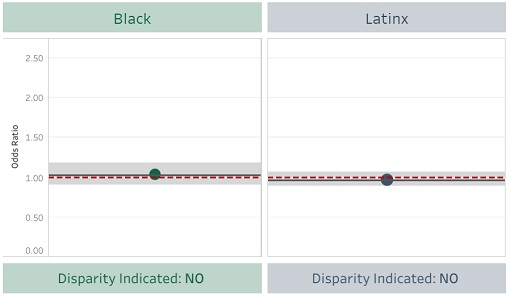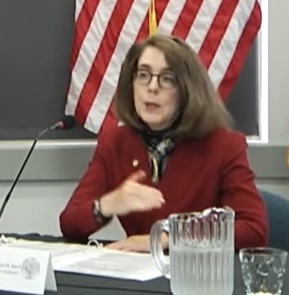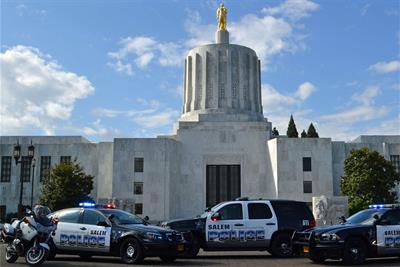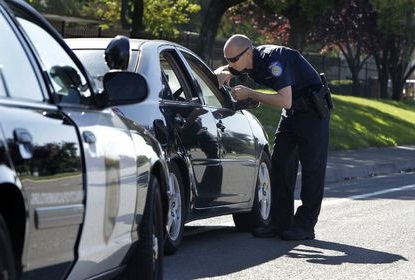
On this day, September 4, 2020, law enforcement declared an unlawful assembly and arrested 27 people after protesters marched through the streets of Portland on to a police building, where officers stood waiting outside.
 Post an Event
Post an Event
| Benton County Republicans’ Private Fundraising Event, “Bent-on Boots and Bling” with Trey Taylor |
| Friday, September 5, 2025 at 5:00 pm |
| Featuring Trey Taylor
Music Private Event
Friday, September 5, 2025 5:00-5:30 pm VIP Reception
5:30-8:00 pm Heavy Appetizers,
Auction, Concert
Red: $750 VIP Reception
Front Row Table Sponsor
White: $500 Table Sponsor
Blue: $50 per person
Limited Seating. Get Yours Now!!!
Support Local
Dress up: Bling, Cowboy, Patriotic Benton County Republican
FUNDRAISER
www.BentonGOP.org
Get your tickets today at:
https://www.bentongop.org/event-details/benton-county-republicans-fundraiser/form
About Trey:
Trey is the youngest African American Man in Country Music History. The Denver Post wrote
"It's impossible to miss his enthusiasm. With a fondness for cowboy boots, gaudy colors and dazzling jewelry, Trey Taylor could stand toe to toe with any of the Pop, Country or even Rap
contemporaries of his generation.“ |
| Trysting Tree Golf Club, 34028 NE Electric Rd., Corvallis |
Governor Brown doubles down on lockdowns
In the face of defiance on the part of many local elected leaders, Governor Kate Brown threatened them with having their counties stay in "Extreme Risk" status and issued the following statement:
“Oregon’s health and safety measures are in place to protect Oregonians, save lives, and keep our hospitals and health care workers from becoming overwhelmed by COVID-19. Oregonians have made incredible sacrifices throughout this pandemic and, now, many communities across Oregon are reducing the spread of COVID-19 and moving into risk levels that allow restaurants and businesses to reopen to at least some indoor service.
“If businesses reopen too early and instead create new spikes in COVID-19 cases, the actions of a few business owners could set entire communities back and keep them in the Extreme Risk category for even longer.
“It’s unfortunate and irresponsible that some local politicians are choosing to willfully mislead business owners into jeopardizing public health and risking fines, instead of working with their communities to help stop the spread of COVID-19 so that we can reopen businesses, schools, and more quickly return to normal life.
While Brown claims that local elected leaders don't have the authority to encourage local business to open up, some have questioned whether she has the authority to keep businesses closed, or to use the Oregon Liquor Control Commission and the Oregon Occupational Safety and Health Administration as enforcement officials. She's been unsuccessful in getting local police and sheriffs to enforce her lockdown provisions. Her statement continues:
“Let me be clear: Local elected officials do not have the authority under Oregon law to disregard my emergency orders or to authorize anyone else to do so. Any businesses that reopen in violation of state risk level requirements for their county will be subject to fines and enforcement. Undoubtedly, those same local elected officials who are encouraging businesses to fully reopen and flagrantly disregard public health are unlikely to have the backs of businesses when faced with fines and penalties, nor are they likely to be willing to be held responsible for the public health impacts their actions create.
“I am urging all Oregon businesses to put the health of their communities first by following the guidance we have in place for their counties. A large majority of businesses continue to do the right thing to protect their communities. However, when Oregonians don’t take COVID-19 seriously, and don’t take steps to reduce the spread of the disease, they put all of us at risk.
“I have directed Oregon OSHA and the OLCC to deploy all available resources to ensure businesses are in compliance. I expect enforcement agencies to continue to use an education first approach, but Oregonians need to understand that these rules are enforceable under law. For businesses that refuse to comply, OSHA and OLCC staff are empowered to take administrative action including issuing citations, fines, and Red Warning Notices if necessary.
In a final plea, the Governor offered more money for impacted businesses. It's not clear where this money will come from. A relief program directed at housing providers contained
$150 million in aid, but the total amount of unpaid residential rent is now estimated to be nearing half a billion dollars and
the eviction moratorium was extended until the end of June of 2021.
A D V E R T I S E M E N T

A D V E R T I S E M E N T
“Oregon has led in our response to COVID-19, and help is on the way for struggling businesses. I proposed new resources for rent relief for businesses in the third special session, and I expect a new round of federal aid to be delivered soon. We can’t waiver in our response to the virus now, when the end is finally in sight and resources are on the way. We are better than this. As we head into the new year, I am asking all Oregonians, yet again, to commit to making smart choices and to take seriously their individual responsibilities during a public health emergency.â€
By virtue of the fact that a growing coalition of county commissioners and mayors are starting to rise up -- in addition to the Governor seeing the necessity of striking back with this statement -- it's clear that the shutdown/lockdown regime is starting to crumble.
--Staff Reports| Post Date: 2021-01-01 10:45:14 | Last Update: 2021-01-01 22:25:09 |
Officers citywide had to be pulled from emergencies
On Thursday, December 31, 2020 at about 7:45p.m., Portland Central Precinct officers became aware of a gathering in the area of Southwest 3rd Avenue and Southwest Main Street. As the crowd grew to an estimated 80-100 people, some individuals in the crowd began to engage in violence. At least two Molotov cocktail-style firebombs were thrown, and large, commercial grade aerial fireworks were launched at the Federal Courthouse and the Justice Center. Some individuals tried to use tools to break into the Justice Center at 1120 Southwest 3rd Avenue, but were not successful.
Portland Police officers citywide had to be pulled from answering emergency calls to respond. Law Enforcement officers from the Federal Protective Services and the Multnomah County Sheriff's office also engaged the crowd and were targeted with dangerous projectiles. Officers were attacked with large rocks, full size bricks, and frozen water bottles. Some officers were targeted by paint balloons that may have been laced with a caustic substance as it caused burning to the skin. Some law enforcement officers suffered injuries, although no Portland Police officers were hurt.
The violence from the crowd prompted a declaration of a riot. The crowd was warned by loudspeaker and social media (@portlandpolice on Twitter), "All persons in the area of Southwest 3rd Avenue around Southwest Main Street are ordered to leave to the south and west immediately. If you do not leave you are subject to arrest, citation, and/or the use of force, including but not limited to impact weapons and tear gas."
Few if any heeded the warning. During the riot, participants started multiple fires. In one, a garbage can was lit ablaze and melted to the pavement. A crosswalk signal was torched, as was various debris piled in the road at Southwest 3rd Avenue and Southwest Main Street. Dangerous objects continued to be thrown at police officers.
The crowd mostly dispersed by 2:00a.m. No CS gas was deployed by Portland Police during this event, but inert smoke and some impact munitions were used.
Several businesses were damaged. Officers are still compiling the reports of damage. If anyone is a victim of a crime related to this event, they're encouraged to
report it online and reference case number 20-384961.
Arrests were made. Information on arrests is still being compiled and a list of those arrested will be released at a later time.
--Ben Fisher| Post Date: 2021-01-01 09:56:36 | Last Update: 2021-01-01 11:30:17 |
Snipe Hunt the 2021 Session
We are the target of a prank. The 2021 Oregon Legislative Session is again a Snipe Hunt. Taking clues from past actions is the best we have to anticipate what the 2021 session will be like in less than a month away.
The three Special Sessions held behind closed doors, blocking citizens from the Capitol, continues to be Governor Brown’s model for the 2021 session. Why else would she continue the lockdown when there is overwhelming science and evidence that lockdowns aren’t effective? Transparency and constitutional rights are being swept under the rug to stifle dialog on issues. Representative Raquel Moore-Green is adamant, “The lack of inclusiveness in discussion and dialog must be addressed prior to the regular session convening in 2021.â€
A rumor is spreading that the 2021 Legislature will organize on January 19 and then stop until the State Capitol can be open to the public. The constitution does not set a start date – a start day is set in statute, which can be changed. However, it wasn’t addressed in the Special Session. The concept may not be to the Governor’s liking, pressuring her to terminate her emergency declaration.
A number of the bills passed in the Special Sessions will terminate in some fashion, and some have already been determined to be insufficient and being discussed for revision. That means all the bills from the Special Sessions are up to be revisited.
The Governor’s budget recommendations set a tone that is materializing in concepts. Governor Brown played the race card to get the emotional attachment she’ll need to appease her party in the legislature. Her priority budget item is $280 million to undo systemic racism. And who is behind that “systemic racism†that we seemingly need to undo? Who has been in power in Oregon for the past 32 years allowing such a decline?
The House Interim Committee on Health Care have prioritized their concepts to address equity in health care, the social determinants of health, and health care affordability. Oregon State Public Interest Research Group presented a public option that is being draft by Representative Andrea Salinas in a bill. Also,
LC 1701 will be a hot topic addressing vaccinations.

The Joint Committee on Transparent Policing and Use of Force Reform is looking to beef up the six police reform bills passed in the first Special Session. In addition, some new concepts include requirements for disclosing the identity, disciplinary standards, modify use of deadly physical force and create a data base of use of physical force, bans choke holds and tear-gas, protection for whistleblowers, and disciplinary alternatives.
According to the Governor, another $685 million is needed for pandemic reasons. Several Committees such as Affordable Housing and Quality Affordable Child Care have not revealed their concepts. However, Senate Republican Leader Fred Girod (R-Lyons) issued this statement that also needs to be resolved during the 2021 session: “Governor Brown demands Congress send Oregon money, however, millions of funds from the first federal coronavirus relief package have gone unspent. Money from the federal government has limitations, and there is no guarantee that federal money will go towards the holes left in the Governor’s budget. Clearly, the Governor has been asleep at the wheel.â€
A D V E R T I S E M E N T

A D V E R T I S E M E N T
The Governor’s Recommended Budget for 2021-23 proposes $100.2 billion in total spending, including $25.6 billion in General Fund and Lottery Funds. The budget includes over $293.8 million in increased revenues and leaves $243.3 million in the General Fund. In addition, by the end of the 2019-21 biennium, the Rainy-Day Fund is projected to have a balance of $942.3 million.
Oregon is on the list of the five top states with the largest rainy-day funds. That should be a factor against the pursuit of a carbon tax pursuit of an Extended Producer Responsibility program, or any other tax or economy killer.
--Donna Bleiler| Post Date: 2020-12-31 13:04:50 | Last Update: 2021-01-01 23:24:01 |
No arrests have been made
A group
caused property damage as it marched through downtown Portland Wednesday night.
On Wednesday, December 30, 2020 at about 7:00p.m., a group, estimated about 40 people, marched out of Director Park, 815 Southwest Park Avenue, headed east to Southwest 3rd Avenue, south to Southwest Jefferson Street, back west to the South Park Blocks and then back to disperse from Director Park. During the march, participants broke windows, spray painted buildings, fired paintballs, and caused other damage (photos). During the march, officers attempted to contact one subject and their police vehicle was spray painted as well.
Among the victims:
- The Oregon Historical Society
- Portland Police Bureau
- Tri-met
- Pac West Center
- Starbucks Coffee 1300 SW 3rd Ave
- Directors Park facilities (Portland Parks and Recreation)
- The University Club
- The Old Courthouse
- Fogo De Chao Restaurant
- Portland City Hall
- First Republic Bank
No arrests were made but the criminal mischief reports are being collected and the investigation is continuing. If there are additional victims, they are encouraged to make an
online report. It is case number 20-383984.
--Ben Fisher| Post Date: 2020-12-31 12:02:03 | Last Update: 2020-12-31 14:03:15 |
Based solely upon the neutral interests of overall public safety
The Oregon State Police have issued the following statement:
The Oregon State Police is aware of several protests that are planned in the Salem area on Friday, January 1, 2021.
The protests are planned to happen at the Oregon State Capitol, Bush Pasture Park, and Mahonia Hall. These protests could also affect streets in the areas of these locations.
OSP encourages people to exercise their first amendment right, but please do so lawfully, peacefully, and respectfully.
OSP and Salem Police Department will have personnel assigned to monitor these protests. If criminal behavior is observed and the situation allows you will be cited or arrested. If an arrest or citation is not able to be immediately made, police will be investigating criminal behavior. If you feel you are the victim of a crime please ensure that you report that to the police.
OSP has set the following operational goals:
- Ensure a safe, non-violent environment for rally participants.
- Ensure a safe, non-violent environment for citizens of Salem and for those passing through the area.
- Minimize traffic flow issues and disruptions.
- Deter or prevent criminal acts and take enforcement action as necessary.
- Protection of property from damage and unauthorized access.
The Salem Police Department has also issued a statement:
The Salem Police Department is aware of several protests that are planned in our
community on Friday, January 1, 2021. These protests may impact areas and city
streets near the Oregon State Capitol, Bush’s Pasture Park and Mahonia Hall. The
Salem Police Department, in partnership with the Oregon State Police and the Marion
County Sheriff’s Office, will have resources including patrol, crowd management teams
and SWAT officers to monitor and manage the protests as they unfold.
The Salem Police Department’s preparations have included reaching out to protest
organizers. Conversations with organizers about safe and lawful protests and the actions
which could result in police enforcement or intervention are an important component to
maintaining order and safety for everyone. Although attempts to speak with all persons
involved have not yet been successful, we remain open to the opportunity for
communication.
We recognize the concerns brought forward by residents. These events have affected
our entire city in one way or another. When opposing groups come into contact, the risk
of violence increases as evidenced in previous protests. The recent events at the
Oregon State Capitol also resulted in violence and property damage. Due to these past
unacceptable and unlawful actions, the Salem Police Department has set the following
objectives and goals for its response to the upcoming protests.
- Our primary goal is to prevent or stop violence, prevent or stop property damage
and deny the unlawful occupation of public or private buildings, while respecting
individuals’ right to free speech and assembly.
- Keep opposing groups from converging in order to prevent violence and best
ensure community safety.
- Take proper enforcement action to address minor offenses when reasonable and
appropriate.
- Ensure follow-up investigation of criminal behavior that was not immediately
addressed.
These goals and objectives are based solely upon the neutral interests of overall public
safety, regardless of the view held or expressed by any particular group of protestors.
To the extent possible, residents are encouraged to avoid the above-mentioned areas
as there may be disruptions to traffic flow.
Both departments are coming off a less-than-ideal performance in which a mostly peaceful protest at the Capitol in Salem turned ugly with gas being deployed and several arrests as citizens attempted to enter the Capitol to attend the proceedings, claiming a constitutional right to do so.
 --Staff Reports
--Staff Reports| Post Date: 2020-12-30 19:38:30 | Last Update: 2020-12-30 20:02:34 |
Democrat Shemia Fagan will take over SOS in 2021
Oregon Republican Secretary of State Bev Clarno has released a statement about her service to Oregon on Wednesday, the second to last day of 2020. She reflected on a term which was hers to complete as the successor to Dennis Richardson, who passed away of cancer in 2019.
"Upon taking the oath of office as Oregon’s secretary of state on April 3, 2019, I quoted the famed commentator Andy Rooney. “Age,†he said, “is nothing but experience, and some of us are more experienced than others. I then noted with a smile that at 83 years old, I was the most “experienced†secretary of state in Oregon’s history.
I have been very grateful to serve as your secretary and will always look back on this time with great pride in the work we conducted and in the great people I have had the privilege of working with. I want to share some thoughts and reflections on my time in this role.
While many know that our agency conducts elections and audits, people aren’t as familiar with our other divisions: archives, business services, corporation, human resources and information services. All of our divisions do amazing work, and I am so proud of everything they do to keep us in line with the goals of transparency, accountability and integrity.
My goal has been to serve in a nonpartisan manner; the core functions of our work don’t have a Democratic or Republican way – only the fair and honest way. I wanted to ensure that we are seeking all perspectives and to try to not let partisanship become a barrier or influence in the work conducted.
Oregon’s secretary of state also serves on the Oregon State Land Board with the governor and state treasurer. Coming from a rural background I feel the need to point out that rural Oregonians often feel left out of the conversation. Having lived in both rural and urban areas of the state, I tried to bring both perspectives to the table to help bring balance: what is good for Wasco may not be good for Salem or vice versa. The balance of perspectives is particularly relevant to the issues that come before the Land Board. Oregon’s constitution directs the Land Board to manage lands under its jurisdiction – the vast majority of which are hundreds of thousands of acres of forestlands – to obtain the greatest benefit for the people of Oregon, consistent with resource conservation and sound land management. I urge all public officials to make an extra effort to understand the needs and concerns of fellow Oregonians across geographical differences.
While my time as Oregon’s secretary of state comes to a close, I will always remain an engaged citizen. It is vital for Oregonians to understand the various functions of government, how we can share our input and try to improve how Oregon works. A responsive government is imperative to building trust and credibility.
Bev Clarno
Secretary Elect Shemia Fagan will be sworn in and take office on Monday, January 4, 2020. She was elected to be Oregon’s next Secretary of State in the 2020 General Election.
--Ben Fisher| Post Date: 2020-12-30 14:34:02 | Last Update: 2020-12-30 16:54:49 |
Race meets science
In the long-term quest to make better decisions based on science, the legislature has created some very creative ways to collect data based on traffic stops. The STOP program stems from the 2017 Oregon Legislative Session, where
HB 2355 was enacted and signed into law. The bill requires:
- All Oregon Law Enforcement Agencies (LEAs) to collect specific data related to officer initiated traffic and pedestrian stops.
- Oregon State Police (OSP), in consultation with the Criminal Justice Commission (CJC) and the Department of Justice (DOJ), to establish a standardized method for the collection of required data elements from all Oregon Law Enforcement Agencies.
- CJC to perform the requisite data analysis to identify patterns and practices and profiling and deliver a report to DPSST to provide advice or technical assistance based on the best practices of policing to Law Enforcement Agencies.
On of the ways that the data is used is to see if traffic stops are made against some races more than others. To test for disparities in the decision to stop a driver, the Veil of Darkness analysis compares stops made by law enforcement officers during the day to those made at night, based on the assumption that officers can better detect the race of an individual during daylight hours as compared to darkness. Specifically, the VOD analysis compares the racial composition of stops during combined inter-twilight window, which occurs during morning and evening commute times. Visibility during this time will vary throughout the course of the year, which makes it possible to compare stop outcomes at the same time of the day but in different lighting conditions.

For example, the VOD analysis can compare stops made on January 10 when it was dark at 5:00pm to stops made two months later at the same time on March 10, which is was still light outside. Given that these two points in time should capture reasonably similar driving populations -- on average, for example, work commuters often drive at similar times of day throughout the year -- comparisons made between race of stopped drivers in the light and darkness will detect whether stops are being made in a disparate fashion when race is visible.
So, what was the outcome of the data? There was
no measurable disparity either with blacks or Latinos in police stops. This fact calls into question the basis for all the
police reform legislation that was done in the first special session. Everyone deserves to be treated equally and fairly, especially by law enforcement, and if this is happening, then policies need to reflect that.
--Staff Reports| Post Date: 2020-12-29 15:24:02 | Last Update: 2020-12-29 21:09:30 |
Smoke ’em, if you can afford ’em.
A series of increases in the taxes on cigarettes and other tobacco products and a new tax on inhalant delivery products, approved by Oregon voters in November, will go into effect January 1, 2021. These are the first of what are expected to be many tax increases enacted by the Oregon Legislature in the upcoming session to backfill holes left by revenue shortfalls due to the COVID-19 recession.
As a result of the passage of Measure 108, which was placed on the November ballot by the Legislature by
HB 2270, consumers will see the following:
- The cigarette tax will increase by $2 per pack of 20 and $2.50 per pack of 25.
- Little cigars, collectively weighing 3 pounds or less per 1,000, must be sold in sealed packages of at least 20. The packs will be taxed as cigarettes and will require an Oregon cigarette tax stamp.
- Inhalant delivery systems, such as vaping and e-cigarette products, will be taxed at a rate of 65% of the wholesale purchase price.
- The cap on the tax on cigars increases from 50 cents to $1.
Revenue produced by the tax changes will be used by the Oregon Health Authority to fund health care coverage for low-income families, including mental health services, and public health programs, including programs addressing tobacco- and nicotine-related disease. Critics of the tax have pointed out that this is an unstable source of continuing revenue and put the state in a position of having to deliver expected services in the future.
The bill, supported mostly by Democrats, was placed on the ballot during the 2019 session. The current
tax on cigarettes is $3.33. After the increase, the tax will be $5.33, which will make Oregon's cigarette tax the
highest in the nation.
Photo by Luka Malic on Unsplash
--Staff Reports| Post Date: 2020-12-29 14:58:17 | Last Update: 2020-12-29 15:24:02 |
Helps industry create jobs
The Strategic Investment Program run by the Oregon Business Development Department offers a 15-year property tax exemption on a portion of
large capital investments. The program was created in the 1990s to induce large, capital-intensive facilities to locate and grow anywhere in Oregon.
To qualify, projects must serve a "traded sector" industry. Oregon law defines "traded sector" as one in which "member firms sell their goods or services into markets for which national or international competition exists."
The project's cost must be at least $25 million in a rural area or $100 million otherwise. But as a practical matter to benefit from the program, the overall investment will need to be considerably bigger. The actual exemption is on property value in excess of a taxable portion, which starts at $100 million for all urban projects, while in rural areas:
| Total Investment Costs | Initial Taxable Portion Amount |
| Not more than $500 million | $25,000,000 |
| Between $0.5 and $1.0 billion | $50,000,000 |
| Greater than $1.0 billion | $100,000,000 |
A rural area must be located entirely outside urban growth boundary of a city with a population of 40,000 or more at the time of state SIP application or in a Rural Strategic Investment Zone designated before October 5, 2015. Taxable portion is based on property's real market value and grows 3% per year.
There are two options for an SIP project to be approved:
- Ad hoc approval. The county holds a public hearing and negotiates an agreement between the business and county and city (if applicable).
- Strategic Investment Zone. The zones are designed to provide a more streamlined local process. At any time, a county (and city) may submit a request through Business Oregon for the Business Oregon Commission to designate a Strategic Investment Zone.
Community Service Fee
Companies must also pay the respective county a community service fee as set by law. The fee is contained in the agreement with the business, which may include additional requirements on the business. The county must also sign a separate agreement with other local governments for distributing the fee.
A D V E R T I S E M E N T

A D V E R T I S E M E N T
For any SIP project that is exempt in the prior tax year, the business must submit a report to Business Oregon detailing its employment and payroll. The report is used to evaluate the program's performance and provide estimates of state personal income tax revenue that may be shared with local governments.
Supporters of the program point out that other states have similar programs and will poach the cream-of-the-crop companies without it. They also point to the jobs and positive secondary economic effects of the program. Critics say that it uses taxpayer funds -- any tax abatement is essentially a general fund loss -- that targets only large and successful companies. Additionally, it may not make sense to have a large monopoly utility company -- Portland General Electric, for instance -- using taxpayer backed money for economic development.
--Staff Reports| Post Date: 2020-12-28 20:08:02 | Last Update: 2020-12-29 08:31:23 |
Insurers will continue to pay for coverage for telehealth services
The State of Oregon has reached an agreement with several health insurance companies to continue providing expanded telehealth options through at least June 30, 2021. Industry experts say that much like COVID-19 has left a permanent impression on "work from home," it is leaving a permanent impression on the delivery of health care via computer, or telehealth.
The agreement follows
guidance issued by the Department of Consumer and Business Services and the Oregon Health Authority in late March requiring health insurance plans to provide in-network coverage for multiple telehealth platforms.
In June 2020, the state reached agreement with health insurance companies to continue providing expanded telehealth options, including payment to providers at the same rate as an in-person visit, through Dec. 31. This new agreement means health insurance companies will continue to provide coverage for expanded telehealth services and pay for these services at the rates they established during the COVID-19 pandemic.
“It is vital for Oregonians to continue to use telehealth services to limit physical contact during this public health emergency,†said Oregon Insurance Commissioner and Department of Consumer and Business Services Director Andrew Stolfi. “Telehealth allows for Oregonians to get important care, often from the comfort of their home. I want to thank the insurance carriers that have joined us in this agreement to provide expanded telehealth services and pay parity for Oregonians.â€
The following insurance companies have agreed to provide expanded telehealth services through June 30, 2021:
- Cambia
- Health Net
- Kaiser Permanente
- Moda
- PacificSource
- Providence
- Regence
- Samaritan
- UnitedHealthcare
In addition to these companies, the Oregon Health Plan will continue to offer pay parity and other allowances for many telehealth services, offering the same rate as an in-person visit for physical health services, behavioral health services, and some dental and long-term care services.
A D V E R T I S E M E N T

A D V E R T I S E M E N T
It is important to note that this agreement does not apply to self-insured plans. The state encourages self-insured plans to cover expanded telehealth services for members. These are plans in which an employer assumes the financial risk of providing health care benefits to its employees. Oregonians who have a self-insured plan should check with their employer about their coverage options.
Oregonians are encouraged to contact their insurance company or health care provider if they have questions about using telehealth services.
Photo by JESHOOTS.COM on Unsplash
--Staff Reports| Post Date: 2020-12-28 19:45:42 | Last Update: 2020-12-28 20:08:02 |
So far they’re not off to a great start
Read the fine print...
Oregon Democrats are showing their true colors, as discrimination and systemic racism are quickly being defined within the action of their enforced policy, rather than its claimed intent.
Small mom and pop businesses owned across Oregon have been ordered to shut down, in what began as an emergency executive order to flatten the curve on deaths. That initial two week lockdown has snowballed into the New Year, whereby large retailers have been deemed essential, and small businesses have been closed, fined or cited by OSHA and the OLCC under Governor's orders. According to Sandy, Oregon Mayor Stan Pulliam Governor Brown claimed days ago she had the data to prove small businesses and gyms (beside 24 Hour Fitness which was never ordered to close) pose a higher risk of spreading COVID-19, than shopping malls, or Walmart. So far Brown has failed to release the data she claims exists, failed to be transparent in her decision making, or proved small businesses, and restaurants pose any higher risk than that of corporate retailers and large chain restaurants. Cities and Counties across Oregon have had enough, and are planning to reopen January first, citing discriminatory practices, and unjustified endangerment.
Mayor elect Scott Keyser of Molalla Oregon gave a well-informed speech Saturday December 26th at a rally held in the heart of main street. Keyser stated "Most cases we're seeing pop up right now are happening at in-home, small gatherings where masking and social distancing goes out the window". He then asked the crowd "when you have friends over are you making them wear a mask inside?", the crowd rumbled No. Keyser then asked "are you enforcing social distancing or sanitizing countertops and toilet seats after every use?" Again the crowd said no. Keyser then pointed to nearby stores, and exclaimed "But main street IS!" A group created by Molalla residents is calling for the town to responsibly reopen January First at 25% of capacity. Amy Grace is an admin of the Facebook group "Reopen Molalla", and stated "it just doesn't make sense to funnel everyone from our town into the two large corporate retail stores, rather than allowing residents to disperse in smaller numbers throughout town". Grace added that "Governor Brown's orders are counterproductive at this point, and placing our community at increased risk for long term damage both from the virus, and from poverty".

The correlation between negative health impacts and poverty have been studied ad nauseum. The federal government designates areas with fewer than one physician per 3,500 residents as "health professional shortage areas, or healthcare deserts". The Post-Gazette/Journal Sentinel data analysis shows that the majority of those are in urban poverty corridors, the rest are in rural areas like Molalla Oregon. This didn't stop Brown from issuing threats via a letter sent to city and county elected officials, claiming that she would ensure OSHA would be out in full force January first.
Aside from deciding who is capable of maintaining their own wealth, and subsequently their own health, the Democratic party has introduced two new legal concepts for the 2021 regular session that advocacy groups are calling flat out racist.
Legislative Concept 1099 -- on its way to becoming a bill for the 2021 session -- affects disadvantaged students by removing their ability to enroll into an online charter school in another district, if their district has a similar program. The slated bill does not, however, address availability. In person and online enrollment for charter schools is capped at 3% for each district. While a school district might have a charter program, depending upon current enrollment, it could also have a very long waitlist before new students can apply.
A D V E R T I S E M E N T

A D V E R T I S E M E N T
Executive Director of Parents Rights in Education, Suzanne Gallagher stated, "this concept isn't new, it's very similar to policies passed during and after the Jim Crow era, whereby students of color, and impoverished students alike were kept within particular geographic locations, unable to access quality education."
In a press release from healthcare advocacy group "Oregonians For Medical Freedom" racial disparities in healthcare are also addressed. This time in reference to legal concept 1701. The legal concept doesn't have a bill title yet, but the action of the bill would place children of color at much greater risk for death and injury. A similar bill HB3063 came before the 2019 legislative assembly, whereby advocates highlighted the bill would remove over 35,000 students from school in Oregon. Many of which reported having IEP's, disabilities, or received government assistance for the school lunch program.
Governor Brown and Speaker of the House Tina Kotek have promised this 2021 regular session would see a much needed focus addressing systemic racism, equity and inclusion. So far they're not off to a great start.
Photo by Zach Vessels on Unsplash
--Breeauna Sagdal| Post Date: 2020-12-28 13:19:58 | Last Update: 2021-01-01 23:38:04 |
Driver license, vehicle tag grace period extended into 2021
Oregon residents with a vehicle registration, permit or driver license expiring between Nov. 1, 2020, and April 30, 2021, have up to three months after their expiration date without being cited by law enforcement for an expired license or tags.
The Oregon Department of Transportation and Oregon law enforcement agencies agreed to the new grace period as DMV catches up with a backlog due to COVID-19 restrictions.
Under the
agreement, Oregon law enforcement officers will exercise more discretion for recently expired licenses and registration before choosing whether to write a citation. Law enforcement can verify the status of a driver or vehicle registration electronically during a traffic stop.
A law enforcement moratorium under Senate Bill 1601 from an Oregon Special Legislative Session last summer will expire Dec. 31. Under that legislation, a police officer cannot issue a citation for the following DMV products if they expired between March 1 and Dec. 31, 2020:
- Driver license and identification cards
- Passenger vehicle registrations
- Commercial vehicle registrations
- Trip permits and temporary registrations
- Disabled parking permits
DMV offices are open by appointment -- mostly those that require in-person visits such as driver license and other identification card-related services. In some parts of Oregon, the first available appointment may be two months out, so don’t wait until the last minute to schedule your appointment.
A D V E R T I S E M E N T

A D V E R T I S E M E N T
As DMV catches up with the backlog, more services will become available by appointment. They do not yet know when walk-in services can resume, but some appointments for vehicle title and registration are available now. You can visit
www.OregonDMV.com for a complete list of services available by office.
--Staff Reports| Post Date: 2020-12-27 19:07:27 | Last Update: 2020-12-27 19:15:46 |
Read More Articles










 The Joint Committee on Transparent Policing and Use of Force Reform is looking to beef up the six police reform bills passed in the first Special Session. In addition, some new concepts include requirements for disclosing the identity, disciplinary standards, modify use of deadly physical force and create a data base of use of physical force, bans choke holds and tear-gas, protection for whistleblowers, and disciplinary alternatives.
The Joint Committee on Transparent Policing and Use of Force Reform is looking to beef up the six police reform bills passed in the first Special Session. In addition, some new concepts include requirements for disclosing the identity, disciplinary standards, modify use of deadly physical force and create a data base of use of physical force, bans choke holds and tear-gas, protection for whistleblowers, and disciplinary alternatives.






 For example, the VOD analysis can compare stops made on January 10 when it was dark at 5:00pm to stops made two months later at the same time on March 10, which is was still light outside. Given that these two points in time should capture reasonably similar driving populations -- on average, for example, work commuters often drive at similar times of day throughout the year -- comparisons made between race of stopped drivers in the light and darkness will detect whether stops are being made in a disparate fashion when race is visible.
For example, the VOD analysis can compare stops made on January 10 when it was dark at 5:00pm to stops made two months later at the same time on March 10, which is was still light outside. Given that these two points in time should capture reasonably similar driving populations -- on average, for example, work commuters often drive at similar times of day throughout the year -- comparisons made between race of stopped drivers in the light and darkness will detect whether stops are being made in a disparate fashion when race is visible.






 The correlation between negative health impacts and poverty have been studied ad nauseum. The federal government designates areas with fewer than one physician per 3,500 residents as "health professional shortage areas, or healthcare deserts". The Post-Gazette/Journal Sentinel data analysis shows that the majority of those are in urban poverty corridors, the rest are in rural areas like Molalla Oregon. This didn't stop Brown from issuing threats via a letter sent to city and county elected officials, claiming that she would ensure OSHA would be out in full force January first.
The correlation between negative health impacts and poverty have been studied ad nauseum. The federal government designates areas with fewer than one physician per 3,500 residents as "health professional shortage areas, or healthcare deserts". The Post-Gazette/Journal Sentinel data analysis shows that the majority of those are in urban poverty corridors, the rest are in rural areas like Molalla Oregon. This didn't stop Brown from issuing threats via a letter sent to city and county elected officials, claiming that she would ensure OSHA would be out in full force January first.


